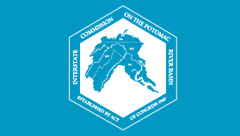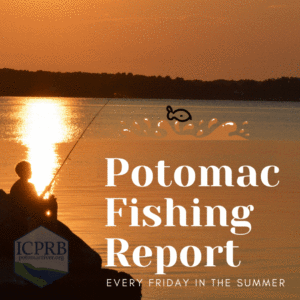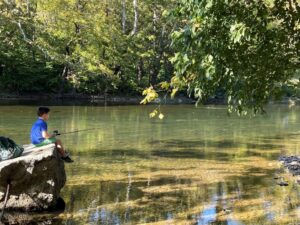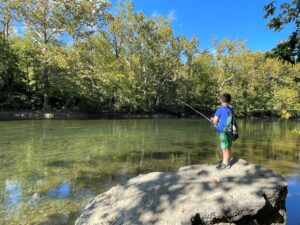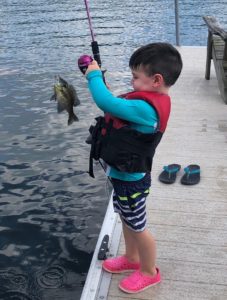Potomac Fishing Report – August 26, 2022
Fishing Report
The Shenandoah system’s North and South forks rare low, clear, and fishable. The summer pattern has anglers on the North and South forks catching fish in the early morning and hitting shaded current areas during the day. Anglers are finding smallmouth and catfish. The mountain trout streams in the national park are low but trout are responding to evening hatches of insects and moths flying around the streams.
In the South Branch Potomac, smallmouth bass are being taken in the river around Petersburg. The river is low and clear, so follow the summertime mantra of long casts and very slow retrieves.
The North Branch Potomac and Savage rivers are reporting decent action in the trout management areas. The North Branch may be hard to fish from some banks due to the Jennings Randolph release this weekend. The ICPRB trout monitoring program on the North Branch is continuing with good success in tracking tagged trout.
The upper Potomac River continues to produce nice fish this year. Water temperatures are around 80 degrees with good clarity. The low water levels seem even lower in the stretch from Point of Rocks to the Monocacy/ Nolands Ferry, where aquatic grass stands are strongly established. The area is still generally passable by boat, but just barely, according to some users. The grasses provide habitat for bass, baitfish, and other creatures, and is contributing to great water clarity this year. The usual access points are all fishable, with a range of smallmouth bass including the occasional 20-inch fish. Anglers are using soft plastics, spinnerbaits, and stick worms to probe rock gardens with currents and eddies. Treefalls and other structure are secondary targets. Low-light times are best to find fish seeking cooler temperatures. Channel catfish and flathead catfish can be taken with live bait.
The metro area is in typical summer pattern, with anglers targeting bridge pilings, riprap, docks, and other structure, preferably in the shade. The area around Key Bridge provides a break from the crowds. Casting plastics and crankbaits to bridge pilings can bring a strike by smallmouth, largemouth, or striped bass. Washington Channel walls and drop-offs are productive. Snakeheads can be found in the lower Anacostia, Some nice bass are being found in the spoils area and the docks at National Harbor.
The tidal Potomac is fishing about the same with early morning and evening periods of moving water providing the best conditions. Channels and deep holes are the home of large blue catfish that can be taken with cut or live bait. Largemouth bass fishing remains good with anglers targting docks and structure until the gras beds fill in at Mattawoman and downstream. The Mattawoman lilly and spatterdock stands are producing largemouth bass and snakeheads, which can also be found lurking in the grass beds at the heads of tidal creeks. Grass beds in Pohick Bay and Chicamuxen Creek are producing some nice fish. Floating mats of detached or dying aquatic grass hold crayfish and provide shade for bass holding below, and penetrating the mats with plastics can bring some good bites. Stick worms fished very slowly are always good bets in the summer heat.
Fishing activity around Colonial Beach is picking up, with some nice catches of striped bass in the 30-inch range. Anglers also are finding some nice Spanish mackerel and bluefish, along with some large spot and croaker. The salty water also is hosting high numbers of sea nettles. There was a report of a bull shark being caught in a catfish net north of Mathias Point. The river’s summer dissolved oxygen problem is about average for this time of year, and depths below 15 feet in the main channel may not have enough oxygen to comfortably hold fish. Blue catfish are readily available.
Near the river’s mouth, anglers are landing some nice Spanish mackerel, bluefish, and red drum. Croaker, white perch, and kingfish are still being taken around Cornfield Harbor. Bluefish are common, and anglers are casting in the shallows for speckled trout. And of course there are blue catfish.
Be careful on the water this weekend. Be mindful of the hazards of abundant sun and high temperatures on both you and your quarry. Handle all fish to be returned quickly and with care.
We are grateful to the many river watchers who contribute to this effort. Particular thanks go to the state departments of natural resources, National Bass Guides, Shallow Water Fishing Adventures, and Machodoc Creek Marina, Inc.

